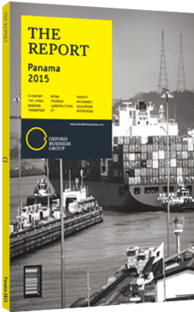Alberto Vallarino, President, Grupo Verdeazul: Interview

Interview: Alberto Vallarino
How has the sector been affected by the slowing issuance of construction permits?
ALBERTO VALLARINO: The effects can be felt both in the public and private sectors. Public finances are affected by longer issuing and approval processes because the tax revenues that can be collected from building permits and construction activities are suppressed. Meanwhile, private company profits are affected as well, as slow issuance can result in longer interest payment periods for construction loans. Banks have not been indifferent to this situation and have become conservative in lending money to real estate projects. However, it is fair to say that the situation is improving. A dialogue between authorities and the private sector has resulted in a more streamlined approval process. Nevertheless, the effects of the decline in licences being issued has not yet been fully felt. Indeed, a slowdown today affects the future rate of growth for the industry.
What changes can be made to building and permit regulations to streamline bureaucracy?
VALLARINO: Certain regulations that apply for construction and housing permits are ambiguous and open to interpretation. This results in public officials interpreting the laws differently and, in turn, slowing down the overall approval process. If there were standardised criteria to be met, the bureaucracy could be significantly reduced, creating a smoother process that is less dependent on interpretation. Increasing the number of qualified people available to review projects would also be beneficial.
In what ways can the construction of additional logistics parks benefit trade in Panama?
VALLARINO: Logistics parks are key to consolidating Panama’s position as a logistics centre for goods and services in the region. These parks take advantage of the trans-shipment of materials coming through the Panama Canal to be used in value-added goods, as well as those arriving from Tocumen International Airport. Additionally, the parks can draw foreign direct investment, as they not only offer attractive incentives to foreign investors, but can also be tailor-made to meet specific market demands.
Demand from the real estate sector is expected to grow by more than 5% in 2015. What are the factors underpinning this growth?
VALLARINO: It is important to break down the real estate sector into its component parts, as not all segments are showing the same growth patterns. For example, there is clearly strong demand coming from the residential market for primary residences, as there is currently a housing deficit in many cities in the country. Also, over the past couple of years, the growth of disposable income and greater access to credit has maintained a strong demand for secondary homes and retail sales. Conversely, when it comes to commercial real estate, including office buildings and hotels, supply currently outweighs demand.
Which real estate segments present the most attractive prospects for foreign investors?
VALLARINO: All segments are potentially attractive for foreign investors; even segments that are not performing well at present still offer investors the ability to buy assets at a discount and generate long-term returns. Regardless of the segment concerned, foreign investors coming to Panama must have some expertise and a level of sophistication, given the highly competitive nature of the market.
Having said this, asset-based investments currently offer the greatest opportunities for foreign investors, particularly office buildings and hotels, due to the dislocation happening in those segments. Regardless, it is advisable that foreign investors, particularly those interested in greenfield project development, seek out local partners that are familiar with the complexities of the Panamanian market.
You have reached the limit of premium articles you can view for free.
Choose from the options below to purchase print or digital editions of our Reports. You can also purchase a website subscription giving you unlimited access to all of our Reports online for 12 months.
If you have already purchased this Report or have a website subscription, please login to continue.

